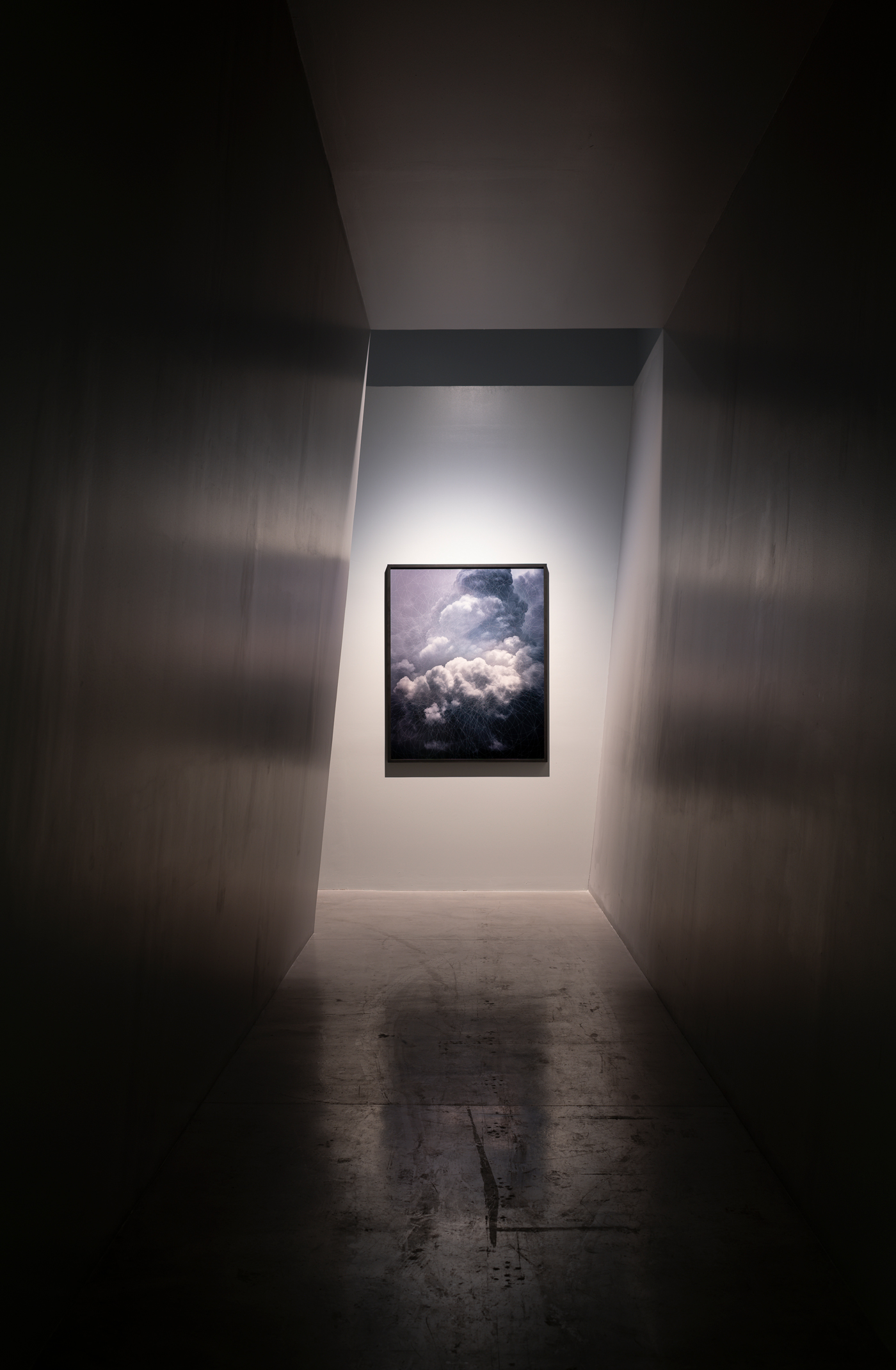Trevor Paglen’s work spans image making, sculpture, investigative journalism, writing, engineering and numerous other disciplines. He analyses current pivotal moments in an attempt to imagine or predict an alternative future.
Circles (2015) is a video of a bird’s-eye view of the GHCQ in the UK, the central base where all communication technology is rooted and centred. Shot from a helicopter, the video pans over the building that houses an anonymous system operated by thousands of workers monitoring and surveilling telecommunications technologies. The slow pace of the video transforms from calming and meditative to disturbing and frightening once the viewer recognises the nature of the building presented in the work.
Paglen’s other works in the exhibition examine the different ways computer vision algorithms are being deployed in current time. To build facial recognition technologies, computers were loaded with ‘training images’ to develop, test and evaluate their veracity and efficiency. Before the advance of social media, the main source for these training images was mugshots of accused individuals and prisoners. They Took the Faces from the Accused and the Dead… (2019) is a visual representation of facial recognition software that was literally built on the faces of prisoners.
In a standard technique employed in facial recognition systems, an algorithm is used to create a faceprint using multiple images of a person, averaging them out mathematically and creating a unique dataset for each person. In ‘de Beauvoir’ (2019), which is a part of the series Even the Dead Are Not Safe, Paglen uses Simone de Beauvoir’s faceprint to identify any future images of de Beauvoir’s face by translating a mathematical abstraction into what human eyes can recognise as a portrait.
Algorithms designed to look for faces, unique keypoints, lines, circles and areas of interest attempt to simplify each underlying photograph into a series of sections. In CLOUD #135 Hough Lines (2019) and CLOUD #865 Hough Circle Transform (2019), these algorithms are used on photos of clouds, producing images that are overlaid with strokes and lines and depicting what a computer vision algorithm is seeing in the images.

